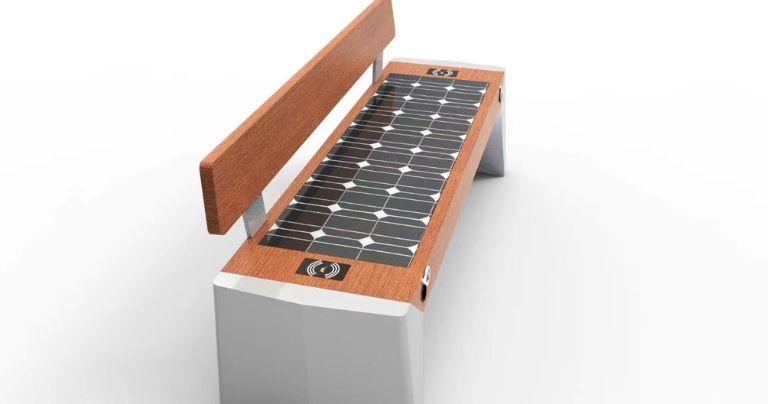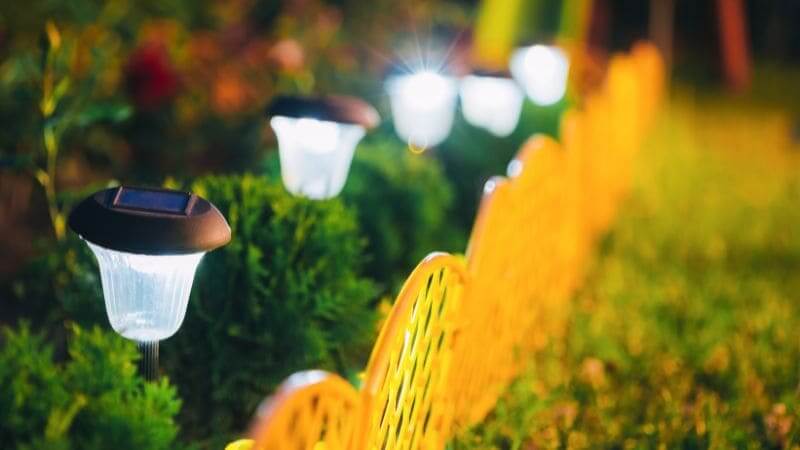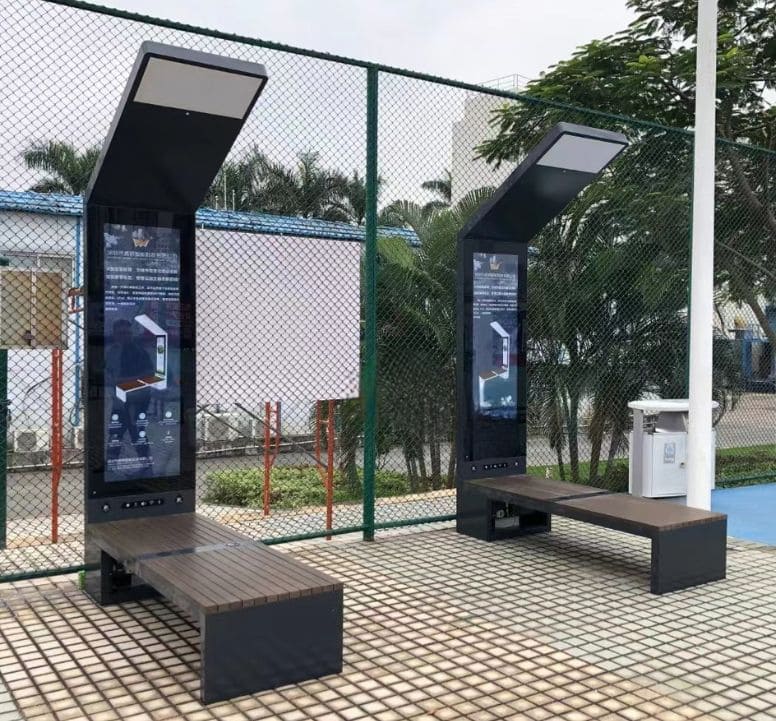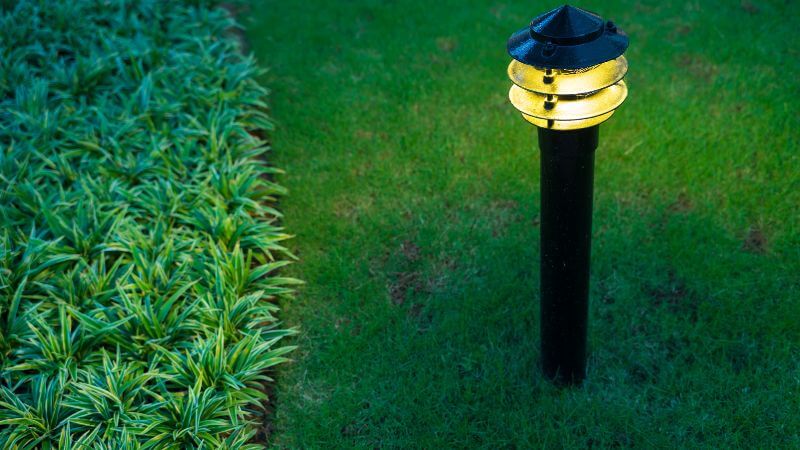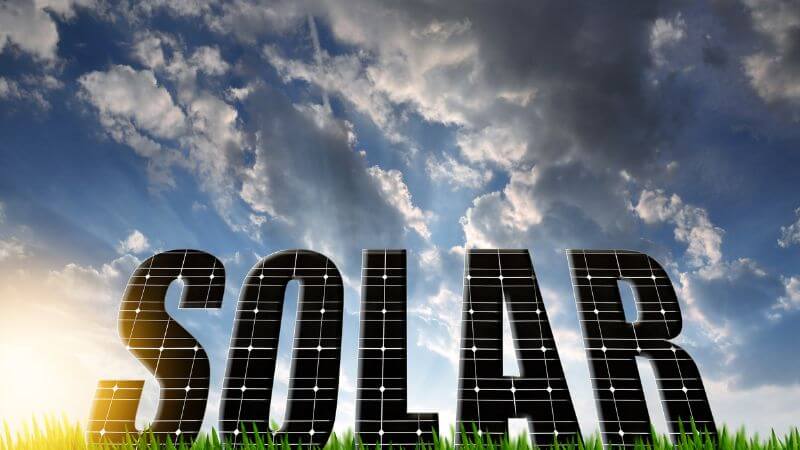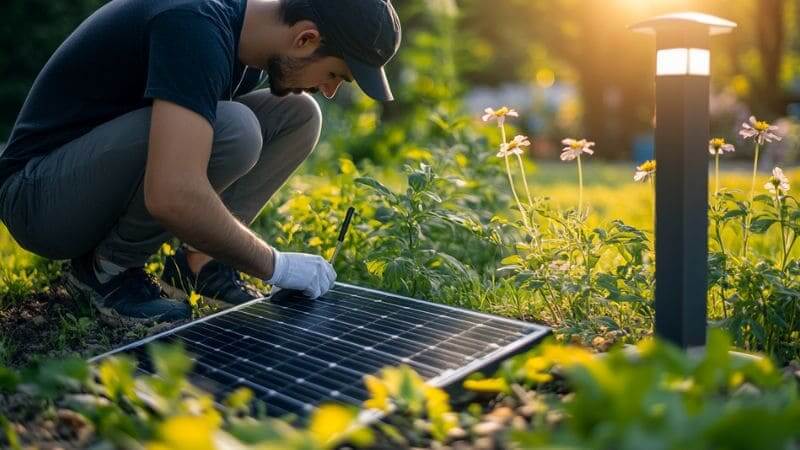In the realm of smart urban furniture, understanding the maintenance needs of solar benches is crucial for their longevity and functionality. This comprehensive guide explores the various aspects of maintaining smart benches, with a special emphasis on the offerings from SolaraNook, known for its exceptional 5-year warranty, a notable extension over the typical 1-year warranty offered by most suppliers.
Maintenance requirements for solar benches are primarily focused on regular cleaning, especially of solar panels, periodic technological updates, thorough physical inspections for wear and tear, effective vandalism prevention and management, along with understanding and leveraging warranty services for long-term upkeep.
Let’s explore the maintenance requirements for solar benches, focusing on aspects like warranty, durability, and user support.
How Crucial Is Regular Cleaning and Physical Upkeep for Solar Benches?
In my role as a seasoned expert in smart urban furniture, particularly solar benches, I’ve learned that their longevity and effectiveness are deeply intertwined with their maintenance, particularly regular cleaning and physical upkeep. But just how crucial are these aspects for solar benches?
The Imperative of Regular Cleaning
Firstly, the cleanliness of these benches is not merely about keeping them visually appealing – it directly impacts their functionality. The solar panels, integral to these benches, require unobstructed exposure to sunlight to operate efficiently. Even a thin layer of dust or debris can significantly reduce their solar energy absorption capability.
- Scheduled Cleaning Regimen: To maintain optimal performance, a regular cleaning schedule is essential. This should include wiping down the solar panels and seating areas, ensuring they are free of dirt, leaves, and other debris. In urban environments, where pollution and bird droppings are common, more frequent cleaning might be necessary.
- Use of Appropriate Cleaning Materials: It’s crucial to use the right cleaning materials. Harsh chemicals or abrasive tools can damage the solar panels and the bench’s surface. I recommend soft cloths and gentle, environmentally friendly cleaning agents.
Physical Inspection for Preventative Maintenance
Equally important is the physical inspection of these benches. Regular check-ups can identify and rectify issues before they escalate into costly repairs.
- Structural Integrity Checks: Inspecting for loose bolts, cracks, or any signs of wear and tear is vital. In areas with extreme weather conditions, these checks should be more frequent to address any weather-related damages promptly.
- Vandalism and Damage Inspection: Given their public location, solar benches can be susceptible to vandalism. Regular inspections can help in quickly addressing such issues, maintaining both the aesthetics and functionality of the benches. Quick repairs following vandalism also send a message about the community’s commitment to maintaining its public spaces.
Adapting to Environmental Changes
Solar-powered benches are exposed to varying environmental conditions which can impact their lifespan and effectiveness.
- Weather-Related Adjustments: In regions with seasonal changes, maintenance routines should adapt accordingly. For example, in snowy areas, it’s essential to clear snow from solar panels promptly, while in coastal areas, addressing corrosion caused by saltwater should be a priority.
- Monitoring for Environmental Wear and Tear: Continuous exposure to sunlight, rain, and possibly salt (in coastal areas) can degrade different materials over time. Regular monitoring and timely refurbishment of worn-out parts can significantly extend the life of these benches.
Training and Awareness
Finally, proper training for maintenance staff and raising public awareness about the correct usage of these benches play a key role in their upkeep.
- Staff Training: Ensuring that maintenance staff are well-trained in identifying and addressing issues is crucial. They should be familiar with the specific requirements of solar benches, from the technicalities of solar panels to the nuances of electronic components.
- Public Awareness: Encouraging the public to use these benches responsibly can reduce the incidence of damage. Informational signage or community campaigns can educate users about the importance and correct use of solar benches.
In conclusion, the regular cleaning and physical upkeep of solar benches are integral to their functionality and longevity. Through a combination of routine cleaning, regular inspections, adaptations to environmental conditions, and effective training and public awareness, these innovative pieces of urban furniture can provide sustained value and service to the community.
What Are the Technological Maintenance and Update Needs for Solar Benches?
In my capacity as an expert in the field of smart urban furniture, I’ve come to recognize the significant role that technological maintenance and updates play in the longevity and effectiveness of solar benches. But what exactly entails the technological upkeep for these innovative installations?
Ensuring Software Remains Up-to-Date
- Regular Software Updates: The software that operates solar benches needs regular updates. These updates are crucial for maintaining the functionality and security of the benches. Just as we routinely update our smartphones and computers, the software in these benches requires similar attention to protect against vulnerabilities and ensure optimal performance.
- Diagnostic Checks: Regular diagnostic checks are essential to preemptively identify and resolve any software issues. These checks help in maintaining the user interface’s smooth operation, the efficiency of charging stations, and the reliability of Wi-Fi connections.
Maintaining Hardware and Electrical Systems
- Battery Health Checks: The batteries in solar benches are central to their operation, especially in powering features after sunset or during cloudy days. Regular monitoring of their health and capacity ensures that the benches can provide consistent service throughout their lifespan.
- Solar Panel Care: The solar panels are the heart of these benches. Keeping them clean is part of physical upkeep, but ensuring their connections and functionality remain intact is a technological concern. This includes checking for any damage to the panels and ensuring their optimal alignment for maximum solar energy absorption.
Responding to Technological Advancements
- Upgrading With Evolving Tech: As technology evolves, so should the features of solar benches. This could mean integrating newer, more efficient solar panels, updating charging ports to accommodate new device models, or enhancing Wi-Fi capabilities to meet increasing data demands.
- Future-Proofing: In my experience, designing solar benches with future-proofing in mind is crucial. This involves making them adaptable to technological advancements, allowing for easy integration of new features without the need for complete overhauls.
Training and Knowledge Sharing
- Staff Training: Ensuring that maintenance staff are not only trained in the physical upkeep but also in the technological aspects is vital. They should be adept at handling software updates, diagnosing technical issues, and performing minor hardware repairs.
- Staying Informed: In this rapidly evolving field, staying informed about the latest technological developments is key. Regular training sessions, attending industry seminars, or even online courses can help maintenance teams stay ahead of the curve.
In conclusion, the technological maintenance and updates of solar benches are as crucial as their physical upkeep. Regular software updates, hardware checks, responding to technological advancements, and ongoing training form the cornerstone of ensuring these benches remain functional, secure, and in step with current technologies. By staying vigilant in these areas, we can significantly enhance the usability and lifespan of solar benches, making them a lasting feature in our smart urban landscapes.
How Crucial Are Warranty and Supplier Support in Maintaining Solar Benches?
As someone deeply immersed in the world of smart urban furniture, I have seen firsthand the profound impact that warranty and supplier support have on the maintenance of solar benches. But what makes warranty and supplier support so crucial in this context?
Navigating the Nuances of Warranty Coverage
- Comprehensive Understanding of Warranty Terms: A thorough understanding of warranty terms is vital. Warranties like the 5-year coverage offered by SolaraNook, significantly longer than the industry standard of 1 year, provide extensive support. This coverage can range from minor repairs to complete replacements, depending on the issue. It’s essential to know the specifics, like what components are covered and under what circumstances.
- Maximizing the Benefits of Extended Warranties: Extended warranties can be a game-changer, especially when dealing with high-tech equipment like solar benches. They offer peace of mind and reduce the long-term maintenance costs. Understanding how to fully utilize these warranties can significantly impact the upkeep and lifecycle of the benches.
Leveraging Supplier Expertise for Effective Maintenance
- Technical Support and Troubleshooting: Access to technical support from suppliers is invaluable. For instance, if a bench malfunctions, being able to reach out to SolaraNook’s engineers for video assistance or troubleshooting tips can quickly resolve issues that might otherwise escalate.
- Utilizing On-Site Services: Some suppliers offer on-site services, which can be particularly beneficial for complex problems. This support can range from regular maintenance visits to on-demand repairs, ensuring that any issues are addressed promptly and effectively by professionals.
The Role of Warranty in Long-Term Bench Viability
- Encouraging Proactive Maintenance: A solid warranty often encourages more proactive maintenance. Knowing that repairs and replacements are covered can lead owners to address issues more quickly, maintaining the bench’s functionality and appearance.
- mpact on Longevity: The extent and quality of warranty and supplier support directly impact the longevity of solar benches. Effective support can extend the life of these benches significantly, making them a more viable and sustainable option for urban spaces.
In summary, warranty and supplier support play a critical role in the maintenance of solar benches. From understanding and utilizing warranty terms to leveraging supplier-provided technical assistance and on-site services, these aspects are pivotal in ensuring that solar benches remain in optimal condition throughout their lifecycle. In the long run, effective use of these resources not only enhances the functionality of the benches but also contributes to their sustainability and longevity in our urban landscapes.
How Effective Are Anti-Vandalism Strategies for Solar Benches?
Addressing vandalism has been a consistent challenge. But how effective are anti-vandalism strategies in protecting solar benches, and what measures can be implemented to prevent and address such incidents?
Implementing Robust Anti-Vandalism Design
- Durable Materials and Construction: The first line of defense against vandalism lies in the use of robust materials and sturdy construction. Solar benches built with anti-vandalism features, such as scratch-resistant surfaces and tamper-proof screws, can withstand rough handling and deliberate damage more effectively.
- Incorporating Damage-Resistant Technologies: Beyond physical toughness, incorporating technologies that are less prone to damage – like concealed wiring and protected charging ports – is crucial in minimizing vandalism’s impact.
Collaborating with Local Authorities for Surveillance
- Utilizing CCTV and Security Measures: Partnering with local authorities to install CCTV cameras or employ other security measures near solar benches can act as a significant deterrent to potential vandals.
- Community Watch Programs: Encouraging community involvement in monitoring and reporting vandalism can also be effective. Such programs foster a sense of ownership and responsibility among locals, making them more likely to protect the benches.
Rapid Response and Repair Mechanisms
- Quick Repair Services: In the event of vandalism, having a rapid response system for repairs is vital. This not only restores the bench’s functionality but also sends a message that vandalism is taken seriously and addressed promptly.
- Regular Maintenance Checks: Regular maintenance checks help in identifying and rectifying any vandalism-related damages before they escalate, ensuring the benches remain safe and functional for users.
Educational and Awareness Campaigns
- Raising Public Awareness: Educating the public about the value and purpose of solar benches can reduce incidents of vandalism. Awareness campaigns that highlight the benches’ benefits and their role in community enhancement can cultivate respect and care among users.
- Involving Schools and Youth Groups: Involving younger demographics through schools and youth programs can be particularly effective. Educating children and teenagers about sustainable technology and civic responsibility can lead to a decrease in vandalism over time.
In conclusion, a multi-faceted approach involving robust design, collaboration with authorities, rapid repair mechanisms, and educational campaigns is essential in preventing and addressing vandalism in solar benches. By implementing these strategies, we can significantly enhance the durability and longevity of these innovative benches, ensuring they continue to serve communities effectively.
How Vital Are Seasonal Adjustments and Weatherproofing for Solar Benches?
The significance of adapting to seasonal changes and implementing weatherproofing measures for solar benches. But just how vital are these adjustments and what specific steps are necessary to ensure the longevity and functionality of solar benches throughout various seasons?
Adapting to Seasonal Variations
- Preparing for Winter Conditions: In colder climates, winterizing solar benches is crucial. This involves ensuring that snow and ice do not obstruct the solar panels and checking that the materials used can withstand freezing temperatures without cracking or becoming brittle.
- Adjusting for Summer Heat: Conversely, in summer, measures need to be taken to protect the benches from extreme heat. This might include installing shades over the benches to prevent overheating of the solar panels and electronic components.
Effective Weatherproofing Strategies
- Protecting Against Rain and Moisture: Waterproofing is essential, particularly for the electronic components. This involves ensuring all electrical connections are sealed and protected from water, which can cause damage or short circuits.
- UV Protection for Materials: Long-term exposure to the sun’s UV rays can degrade many materials. Applying UV-protective coatings and using UV-resistant materials in the construction of solar benches helps maintain their appearance and structural integrity.
Regular Seasonal Maintenance Checks
- Spring and Fall Inspections: Conducting thorough inspections during transitional seasons like spring and fall can prepare the benches for the more extreme weather conditions of summer and winter. These checks can identify any needed repairs or adjustments after the stress of extreme temperatures.
- Responsive Maintenance Post-Weather Events: Following significant weather events like storms or heatwaves, immediate inspections and maintenance are crucial to address any damage and ensure the benches’ continued safe operation.
Incorporating Seasonal Design Elements
- Design Flexibility for Seasonal Adaptation: Designing solar benches with seasonal adaptability in mind from the outset can greatly enhance their resilience. This includes features like easy-to-remove snow covers or built-in shades for sunny days.
- Material Selection for All-Weather Durability: Choosing materials that are resilient across a range of weather conditions is key. This not only prolongs the life of the benches but also reduces the need for frequent repairs and replacements.
In conclusion, seasonal adjustments and weatherproofing are vital components of maintaining solar benches. These measures ensure that the benches remain functional and safe throughout the year, regardless of weather conditions. By prioritizing these aspects, we can significantly extend the lifespan of these innovative pieces of urban furniture, making them a sustainable and reliable choice for public spaces.
Why Is User Feedback and Continuous Improvement Integral to Solar Bench Maintenance?
The user feedback and a commitment to continuous improvement are key to their success. But why is this focus on feedback and ongoing refinement so integral to maintaining solar benches effectively?
Leveraging User Feedback for Enhanced Functionality
- Gathering Insights: User feedback is an invaluable resource for understanding how solar benches meet or fail to meet user needs. Actively seeking out and analyzing feedback can reveal insights into functionality issues, desired features, and user satisfaction levels.
- Implementing Changes Based on Feedback: Using this information to make informed adjustments not only improves the benches but also enhances user satisfaction. Whether it’s tweaking the design for more comfort or upgrading the technology for faster charging, user-driven changes can significantly impact the benches’ utility and appeal.
The Role of Continuous Improvement in Bench Longevity
- Adapting to Technological Advancements: The field of smart urban furniture is rapidly evolving. Staying abreast of the latest technological advancements and incorporating them into solar benches ensures that they remain relevant and efficient in an ever-changing landscape.
- Preventive Maintenance and Upgrades: Continuous improvement also involves regular maintenance and proactive upgrades. This approach prevents small issues from becoming major problems and keeps the benches at peak functionality.
Collaborative Development with End-Users
- Engaging with the Community: Establishing a dialogue with the community and end-users can foster a collaborative approach to bench design and functionality. This partnership can lead to more user-centric products that accurately reflect the needs and preferences of those who use them.
- Feedback Loops and Iterative Design: Implementing a feedback loop where users can see their suggestions come to fruition encourages further engagement and creates a sense of ownership and pride in the communal spaces.
Evolving Bench Designs for Future Needs
- Forecasting Future Trends: Part of continuous improvement involves anticipating future needs and trends. This forward-thinking approach ensures that solar benches not only meet current demands but are also prepared for future developments in urban living and technology.
- Sustainability and Long-Term Planning: In the realm of sustainable urban furniture, long-term planning is crucial. Continuous improvement in design and technology can contribute to the overall sustainability goals of urban spaces, making solar benches a viable option for years to come.
Conclusion
The maintenance of smart benches is multifaceted, involving regular cleaning, technological upkeep, vigilant warranty management, vandalism mitigation, seasonal adjustments, and continuous improvement based on user feedback. Companies like SolaraNook, with their extended warranty and supportive maintenance services, exemplify the commitment to ensuring these smart urban furniture pieces remain functional, safe, and appealing in public spaces.

